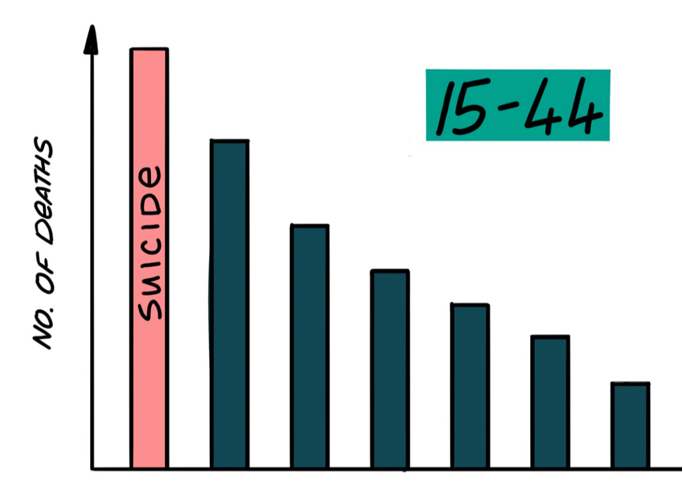01 _About
Why is this tool important?
This tool was developed by a group of passionate researchers aiming to better equip the community to detect and respond to suicide risk in others.
Suicide is the leading cause of death of Australians aged 15-44 years and 3rd leading cause of death for ages 45+.
Most people thinking about suicide (70-90%) don’t seek professional help, instead indicating their distress to family and friends.
Most family and friends (75%) do not help due to fear and uncertainty – this is called the Bystander Effect.
The Bystander Effect: An effect in groups where if someone needs help, most people do nothing.
We are less likely to help if others could. We think:
‘Someone should really do something about that.’
‘Someone should check on them.’
50% of people who die by suicide had no diagnosed mental illness, instead suffering from immediate distress such as discrimination, bullying and/or hopelessness.
The community can help in the early detection of suicide risk, linking at risk people to professional and/or community support and potentially saving lives.
What makes this tool different to existing resources?
Free
Online, so no need to attend long and expensive workshops
Engaging through various modes of communication: text, videos, images
Does not rely on the memory of a once-off training where participants are often shown to not retain learning
Includes specific information about priority populations who experience higher rates of suicide and are often missed in general suicide prevention training including:
Autistic and neuro-divergent people (Neuro-divergent means people who are neuro minority, including autism, attention-deficit-hyperactivity, intellectual disability)
The lesbian, gay, bisexual, transgender (including gender questioning and gender queer), intersex, queer and asexual (LGBTIQA+) community
Theory informed – the tool is informed by the Bystander Intervention Model to overcome the Bystander Effect
Evidence based – the tool has been tested for efficacy and found to increase user confidence, intent, readiness and skill in detecting and responding to suicide risk in others in studies involving over 900 people
The tool is co-designed with autistic and LGBTIQA+ people and their families
The tool is co-designed with people and their families with lived experience of past suicidal behaviours

